Biomarker Identification through Multiomics Data Analysis of Prostate Cancer Prognostication Using a Deep Learning Model and Similarity Network Fusion
Abstract
Simple Summary
Abstract
1. Introduction
2. Materials and Methods
2.1. Data Collection and Preprocessing
2.2. SNF Construction
2.3. DL Framework
2.4. Identification of Recurrence-Associated Variables and Subgroups
2.5. Functional Enrichment Analysis of Recurrence-Associated Variables
2.6. Evaluation of the Discrimination Power between the Autoencoder Model and SNF
2.7. Construction of the SVM Classifier Based on the Labeled Subgroup
2.8. Multiomics Panel Construction for PRAD Recurrence Prediction
3. Results
3.1. Outcome of the SNF Analysis
3.1.1. Two Differential Recurrence-Risk Subgroups were Identified in TCGA Three-Omics Data
3.1.2. Differential Expression Analysis of Each Omics Dataset
3.2. Outcome of the Autoencoder Model Analysis
3.2.1. Performance of the Autoencoder Model with Different Hyper-Parameters
3.2.2. Two Recurrence-Risk Subgroups Identified
3.2.3. Differential Expression Analysis between the Two Subgroups
3.3. Validation of the Robustness of the SVM Classifier
3.4. Intersected DEGs between the Autoencoder Model and SNF
3.5. Prognostic Multiomics Panel Construction
4. Discussion
4.1. Potential Recurrence Biomarkers of PRAD from the Autoencoder Model and SNF
4.2. Functional Pathway Analysis of the Top DEGs
5. Conclusions
Supplementary Materials
Author Contributions
Funding
Institutional Review Board Statement
Informed Consent Statement
Data Availability Statement
Conflicts of Interest
References
- Bray, F.; Ferlay, J.; Soerjomataram, I.; Siegel, R.L.; Torre, L.A.; Jemal, A. Global cancer statistics 2018: GLOBOCAN estimates of incidence and mortality worldwide for 36 cancers in 185 countries. CA Cancer J. Clin. 2018, 68, 394–424. [Google Scholar] [CrossRef]
- Key Statistics for Prostate Cancer. Available online: https://www.cancer.org/cancer/prostate-cancer/about/key-statistics.html (accessed on 27 October 2020).
- Rawla, P. Epidemiology of Prostate Cancer. World J. Oncol. 2019, 10, 63–89. [Google Scholar] [CrossRef] [PubMed]
- Tomczak, K.; Czerwinska, P.; Wiznerowicz, M. The Cancer Genome Atlas (TCGA): An immeasurable source of knowledge. Contemp. Oncol. 2015, 19, A68–A77. [Google Scholar] [CrossRef]
- Zhang, J.; Baran, J.; Cros, A.; Guberman, J.M.; Haider, S.; Hsu, J.; Liang, Y.; Rivkin, E.; Wang, J.; Whitty, B.; et al. International Cancer Genome Consortium Data Portal--a one-stop shop for cancer genomics data. Database 2011, 2011, bar026. [Google Scholar] [CrossRef]
- Clough, E.; Barrett, T. The Gene Expression Omnibus Database. Methods Mol. Biol. 2016, 1418, 93–110. [Google Scholar] [CrossRef]
- Yousefi, S.; Amrollahi, F.; Amgad, M.; Dong, C.; Lewis, J.E.; Song, C.; Gutman, D.A.; Halani, S.H.; Velazquez Vega, J.E.; Brat, D.J.; et al. Predicting clinical outcomes from large scale cancer genomic profiles with deep survival models. Sci. Rep. 2017, 7, 11707. [Google Scholar] [CrossRef]
- Chaudhary, K.; Poirion, O.B.; Lu, L.; Garmire, L.X. Deep Learning-Based Multi-Omics Integration Robustly Predicts Survival in Liver Cancer. Clin. Cancer Res. 2018, 24, 1248–1259. [Google Scholar] [CrossRef] [PubMed]
- Zhang, L.; Lv, C.; Jin, Y.; Cheng, G.; Fu, Y.; Yuan, D.; Tao, Y.; Guo, Y.; Ni, X.; Shi, T. Deep Learning-Based Multi-Omics Data Integration Reveals Two Prognostic Subtypes in High-Risk Neuroblastoma. Front. Genet. 2018, 9, 477. [Google Scholar] [CrossRef]
- Zhang, Q.; Burdette, J.E.; Wang, J.P. Integrative network analysis of TCGA data for ovarian cancer. BMC Syst. Biol. 2014, 8, 1338. [Google Scholar] [CrossRef]
- Wang, B.; Mezlini, A.M.; Demir, F.; Fiume, M.; Tu, Z.; Brudno, M.; Haibe-Kains, B.; Goldenberg, A. Similarity network fusion for aggregating data types on a genomic scale. Nat. Methods 2014, 11, 333–337. [Google Scholar] [CrossRef] [PubMed]
- Kamyshanska, H.; Memisevic, R. The Potential Energy of an Autoencoder. IEEE Trans. Pattern Anal. Mach. Intell. 2015, 37, 1261–1273. [Google Scholar] [CrossRef] [PubMed]
- Rousseeuw, P.J. Silhouettes: A graphical aid to the interpretation and validation of cluster analysis. J. Comput. Appl. Math. 1987, 20, 53–65. [Google Scholar] [CrossRef]
- Ekins, S.; Nikolsky, Y.; Bugrim, A.; Kirillov, E.; Nikolskaya, T. Pathway mapping tools for analysis of high content data. Methods Mol. Biol. 2007, 356, 319–350. [Google Scholar] [CrossRef]
- Raykar, V.C.; Steck, H.; Krishnapuram, B.; Dehing-Oberije, C.; Lambin, P. On ranking in survival analysis: Bounds on the concordance index. In Proceedings of the 20th International Conference on Neural Information Processing Systems, Vancouver, BC, Canada, 4–7 December 2006; pp. 1209–1216. [Google Scholar]
- Harrell, F.E., Jr.; Lee, K.L.; Mark, D.B. Multivariable prognostic models: Issues in developing models, evaluating assumptions and adequacy, and measuring and reducing errors. Stat. Med. 1996, 15, 361–387. [Google Scholar] [CrossRef]
- Chang, T.H.; Wu, L.C.; Chen, Y.T.; Huang, H.D.; Liu, B.J.; Cheng, K.F.; Horng, J.T. Characterization and prediction of mRNA polyadenylation sites in human genes. Med. Biol. Eng. Comput. 2011, 49, 463–472. [Google Scholar] [CrossRef] [PubMed]
- Huang, G.T.; Cunningham, K.I.; Benos, P.V.; Chennubhotla, C.S. Spectral clustering strategies for heterogeneous disease expression data. Pac. Symp. Biocomput. 2013, 2013, 212–223. [Google Scholar]
- Lu, H.J.; Yang, L.; Yan, K.; Xue, Y.; Gao, Z.G. A cost-sensitive rotation forest algorithm for gene expression data classification. Neurocomputing 2017, 228, 270–276. [Google Scholar] [CrossRef]
- Chu, J.; Li, N.; Gai, W. Identification of genes that predict the biochemical recurrence of prostate cancer. Oncol. Lett. 2018, 16, 3447–3452. [Google Scholar] [CrossRef]
- Guo, Z.; Zhang, X.; Zhu, H.; Zhong, N.; Luo, X.; Zhang, Y.; Tu, F.; Zhong, J.; Wang, X.; He, J.; et al. TELO2 induced progression of colorectal cancer by binding with RICTOR through mTORC2. Oncol. Rep. 2020. [Google Scholar] [CrossRef]
- Iddawela, M.; Pazaro, C.; Lawrence, M.; Furic, L.; Taylor, R.; Risbridger, G. Association of “DNA damage signature” with poor outcome in early prostate cancer. J. Clin. Oncol. 2015, 33, 13. [Google Scholar] [CrossRef]
- Fan, S.; Liang, Z.; Gao, Z.; Pan, Z.; Han, S.; Liu, X.; Zhao, C.; Yang, W.; Pan, Z.; Feng, W. Identification of the key genes and pathways in prostate cancer. Oncol. Lett. 2018, 16, 6663–6669. [Google Scholar] [CrossRef] [PubMed]
- Bii, V.M.; Collins, C.P.; Hocum, J.D.; Trobridge, G.D. Replication-incompetent gammaretroviral and lentiviral vector-based insertional mutagenesis screens identify prostate cancer progression genes. Oncotarget 2018, 9, 15451–15463. [Google Scholar] [CrossRef] [PubMed]
- Hua, X.; Ge, S.; Chen, J.; Zhang, L.; Tai, S.; Liang, C. Effects of RNA Binding Proteins on the Prognosis and Malignant Progression in Prostate Cancer. Front. Genet. 2020, 11, 591667. [Google Scholar] [CrossRef]
- Budka, J.A.; Ferris, M.W.; Capone, M.J.; Hollenhorst, P.C. Common ELF1 deletion in prostate cancer bolsters oncogenic ETS function, inhibits senescence and promotes docetaxel resistance. Genes Cancer 2018, 9, 198–214. [Google Scholar] [CrossRef] [PubMed]
- Fladeby, C.; Gupta, S.N.; Barois, N.; Lorenzo, P.I.; Simpson, J.C.; Saatcioglu, F.; Bakke, O. Human PARM-1 is a novel mucin-like, androgen-regulated gene exhibiting proliferative effects in prostate cancer cells. Int. J. Cancer 2008, 122, 1229–1235. [Google Scholar] [CrossRef]
- Paschalis, A.; Welti, J.; Neeb, A.J.; Yuan, W.; Figueiredo, I.; Pereira, R.; Ferreira, A.; Riisnaes, R.; Rodrigues, D.N.; Jimenez-Vacas, J.M.; et al. JMJD6 Is a Druggable Oxygenase That Regulates AR-V7 Expression in Prostate Cancer. Cancer Res. 2021, 81, 1087–1100. [Google Scholar] [CrossRef] [PubMed]
- Tong, D. The role of JMJD6/U2AF65/AR-V7 axis in castration-resistant prostate cancer progression. Cancer Cell. Int. 2021, 21, 45. [Google Scholar] [CrossRef] [PubMed]
- Kumar, B.; Rosenberg, A.Z.; Choi, S.M.; Fox-Talbot, K.; De Marzo, A.M.; Nonn, L.; Brennen, W.N.; Marchionni, L.; Halushka, M.K.; Lupold, S.E. Cell-type specific expression of oncogenic and tumor suppressive microRNAs in the human prostate and prostate cancer. Sci. Rep. 2018, 8, 7189. [Google Scholar] [CrossRef] [PubMed]
- Leite, K.R.; Tomiyama, A.; Reis, S.T.; Sousa-Canavez, J.M.; Sanudo, A.; Camara-Lopes, L.H.; Srougi, M. MicroRNA expression profiles in the progression of prostate cancer--from high-grade prostate intraepithelial neoplasia to metastasis. Urol. Oncol. 2013, 31, 796–801. [Google Scholar] [CrossRef]
- Szczyrba, J.; Loprich, E.; Wach, S.; Jung, V.; Unteregger, G.; Barth, S.; Grobholz, R.; Wieland, W.; Stohr, R.; Hartmann, A.; et al. The microRNA profile of prostate carcinoma obtained by deep sequencing. Mol. Cancer Res. 2010, 8, 529–538. [Google Scholar] [CrossRef]
- Gururajan, M.; Josson, S.; Chu, G.C.; Lu, C.L.; Lu, Y.T.; Haga, C.L.; Zhau, H.E.; Liu, C.; Lichterman, J.; Duan, P.; et al. miR-154* and miR-379 in the DLK1-DIO3 microRNA mega-cluster regulate epithelial to mesenchymal transition and bone metastasis of prostate cancer. Clin. Cancer Res. 2014, 20, 6559–6569. [Google Scholar] [CrossRef] [PubMed]
- Taddei, M.L.; Cavallini, L.; Ramazzotti, M.; Comito, G.; Pietrovito, L.; Morandi, A.; Giannoni, E.; Raugei, G.; Chiarugi, P. Stromal-induced downregulation of miR-1247 promotes prostate cancer malignancy. J. Cell Physiol. 2019, 234, 8274–8285. [Google Scholar] [CrossRef]
- Gao, L.; Zhang, L.J.; Li, S.H.; Wei, L.L.; Luo, B.; He, R.Q.; Xia, S. Role of miR-452-5p in the tumorigenesis of prostate cancer: A study based on the Cancer Genome Atl(TCGA), Gene Expression Omnibus (GEO), and bioinformatics analysis. Pathol. Res. Pract. 2018, 214, 732–749. [Google Scholar] [CrossRef]
- Kojima, S.; Chiyomaru, T.; Kawakami, K.; Yoshino, H.; Enokida, H.; Nohata, N.; Fuse, M.; Ichikawa, T.; Naya, Y.; Nakagawa, M.; et al. Tumour suppressors miR-1 and miR-133a target the oncogenic function of purine nucleoside phosphorylase (PNP) in prostate cancer. Br. J. Cancer 2012, 106, 405–413. [Google Scholar] [CrossRef] [PubMed]
- Grasso, A.W.; Wen, D.; Miller, C.M.; Rhim, J.S.; Pretlow, T.G.; Kung, H.J. ErbB kinases and NDF signaling in human prostate cancer cells. Oncogene 1997, 15, 2705–2716. [Google Scholar] [CrossRef] [PubMed][Green Version]
- Ben-Yosef, R.; Sarid, D.; Vexler, A.; Lidawi, G.; Inbar, M.; Marmor, S.; Starr, A.; Yaal Hahoshen, N. Nuclear and cytoplasmic expression of ErbB-4 in prostate cancer. Int. J. Biol. Markers 2007, 22, 181–185. [Google Scholar] [CrossRef]
- Mellinghoff, I.K.; Vivanco, I.; Kwon, A.; Tran, C.; Wongvipat, J.; Sawyers, C.L. HER2/neu kinase-dependent modulation of androgen receptor function through effects on DNA binding and stability. Cancer Cell 2004, 6, 517–527. [Google Scholar] [CrossRef] [PubMed]
- Adam, R.M.; Kim, J.; Lin, J.; Orsola, A.; Zhuang, L.; Rice, D.C.; Freeman, M.R. Heparin-binding epidermal growth factor-like growth factor stimulates androgen-independent prostate tumor growth and antagonizes androgen receptor function. Endocrinology 2002, 143, 4599–4608. [Google Scholar] [CrossRef]
- Cinar, B.; De Benedetti, A.; Freeman, M.R. Post-transcriptional regulation of the androgen receptor by Mammalian target of rapamycin. Cancer Res. 2005, 65, 2547–2553. [Google Scholar] [CrossRef]
- Freeman, M.R.; Cinar, B.; Kim, J.; Mukhopadhyay, N.K.; Di Vizio, D.; Adam, R.M.; Solomon, K.R. Transit of hormonal and EGF receptor-dependent signals through cholesterol-rich membranes. Steroids 2007, 72, 210–217. [Google Scholar] [CrossRef]
- Edwards, J.; Krishna, N.S.; Witton, C.J.; Bartlett, J.M. Gene amplifications associated with the development of hormone-resistant prostate cancer. Clin. Cancer Res. 2003, 9, 5271–5281. [Google Scholar] [PubMed]
- Olapade-Olaopa, E.O. The expression of a mutant epidermal growth factor receptor in prostatic tumours. BJU Int. 2001, 87, 224–226. [Google Scholar] [CrossRef][Green Version]
- Mimeault, M.; Pommery, N.; Henichart, J.P. New advances on prostate carcinogenesis and therapies: Involvement of EGF-EGFR transduction system. Growth Factors 2003, 21, 1–14. [Google Scholar] [CrossRef] [PubMed]
- Ross, J.S.; Sheehan, C.E.; Hayner-Buchan, A.M.; Ambros, R.A.; Kallakury, B.V.; Kaufman, R.P., Jr.; Fisher, H.A.; Rifkin, M.D.; Muraca, P.J. Prognostic significance of HER-2/neu gene amplification status by fluorescence in situ hybridization of prostate carcinoma. Cancer 1997, 79, 2162–2170. [Google Scholar] [CrossRef]
- Peng, D.; Fan, Z.; Lu, Y.; DeBlasio, T.; Scher, H.; Mendelsohn, J. Anti-epidermal growth factor receptor monoclonal antibody 225 up-regulates p27KIP1 and induces G1 arrest in prostatic cancer cell line DU145. Cancer Res. 1996, 56, 3666–3669. [Google Scholar]
- Karashima, T.; Sweeney, P.; Slaton, J.W.; Kim, S.J.; Kedar, D.; Izawa, J.I.; Fan, Z.; Pettaway, C.; Hicklin, D.J.; Shuin, T.; et al. Inhibition of angiogenesis by the antiepidermal growth factor receptor antibody ImClone C225 in androgen-independent prostate cancer growing orthotopically in nude mice. Clin. Cancer Res. 2002, 8, 1253–1264. [Google Scholar]
- Aaronson, D.S.; Muller, M.; Neves, S.R.; Chung, W.C.; Jayaram, G.; Iyengar, R.; Ram, P.T. An androgen-IL-6-Stat3 autocrine loop re-routes EGF signal in prostate cancer cells. Mol. Cell Endocrinol. 2007, 270, 50–56. [Google Scholar] [CrossRef] [PubMed]
- Kassis, J.; Moellinger, J.; Lo, H.; Greenberg, N.M.; Kim, H.G.; Wells, A. A role for phospholipase C-gamma-mediated signaling in tumor cell invasion. Clin. Cancer Res. 1999, 5, 2251–2260. [Google Scholar]
- Shepard, C.R.; Kassis, J.; Whaley, D.L.; Kim, H.G.; Wells, A. PLC gamma contributes to metastasis of in situ-occurring mammary and prostate tumors. Oncogene 2007, 26, 3020–3026. [Google Scholar] [CrossRef]
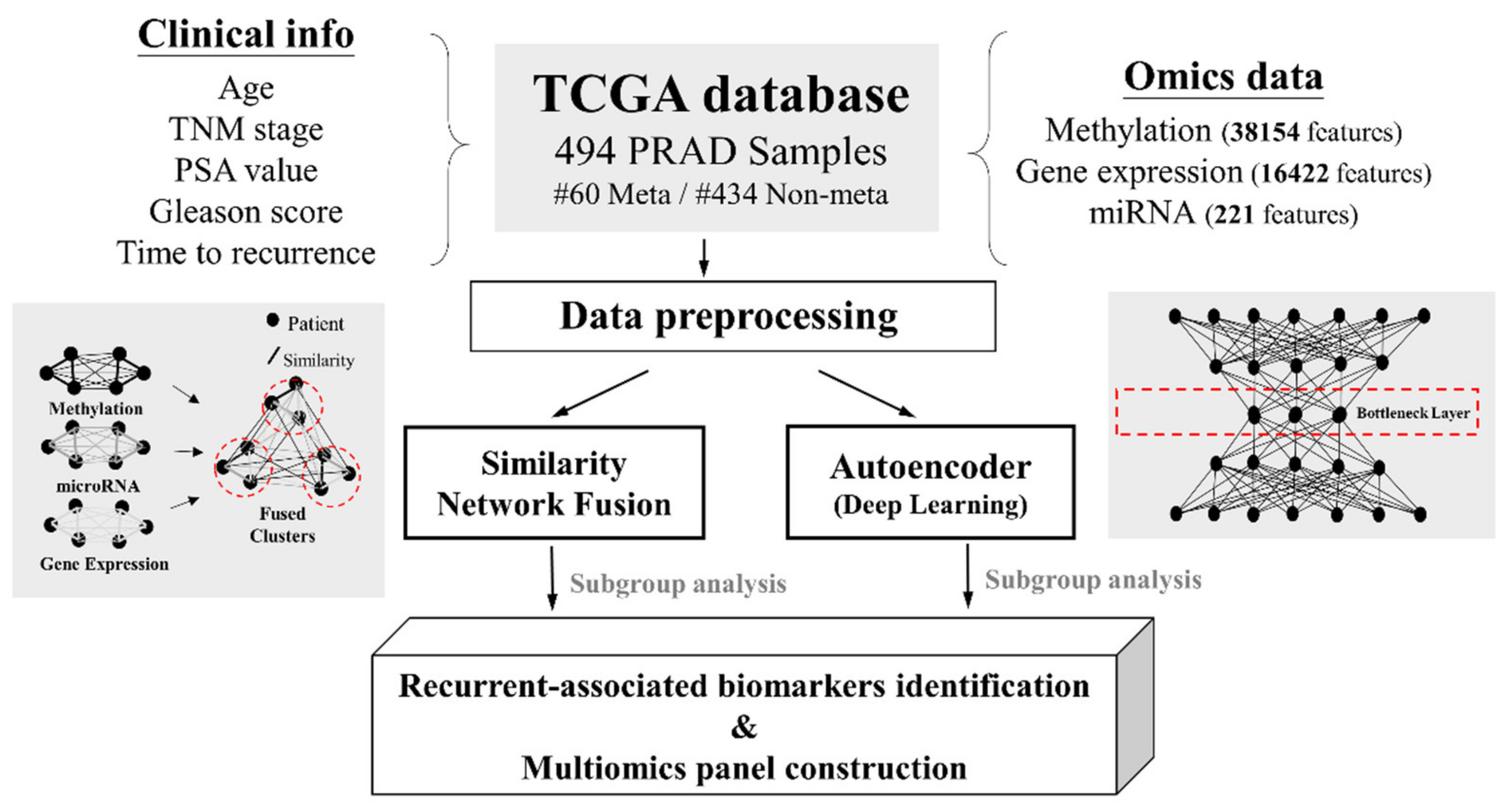
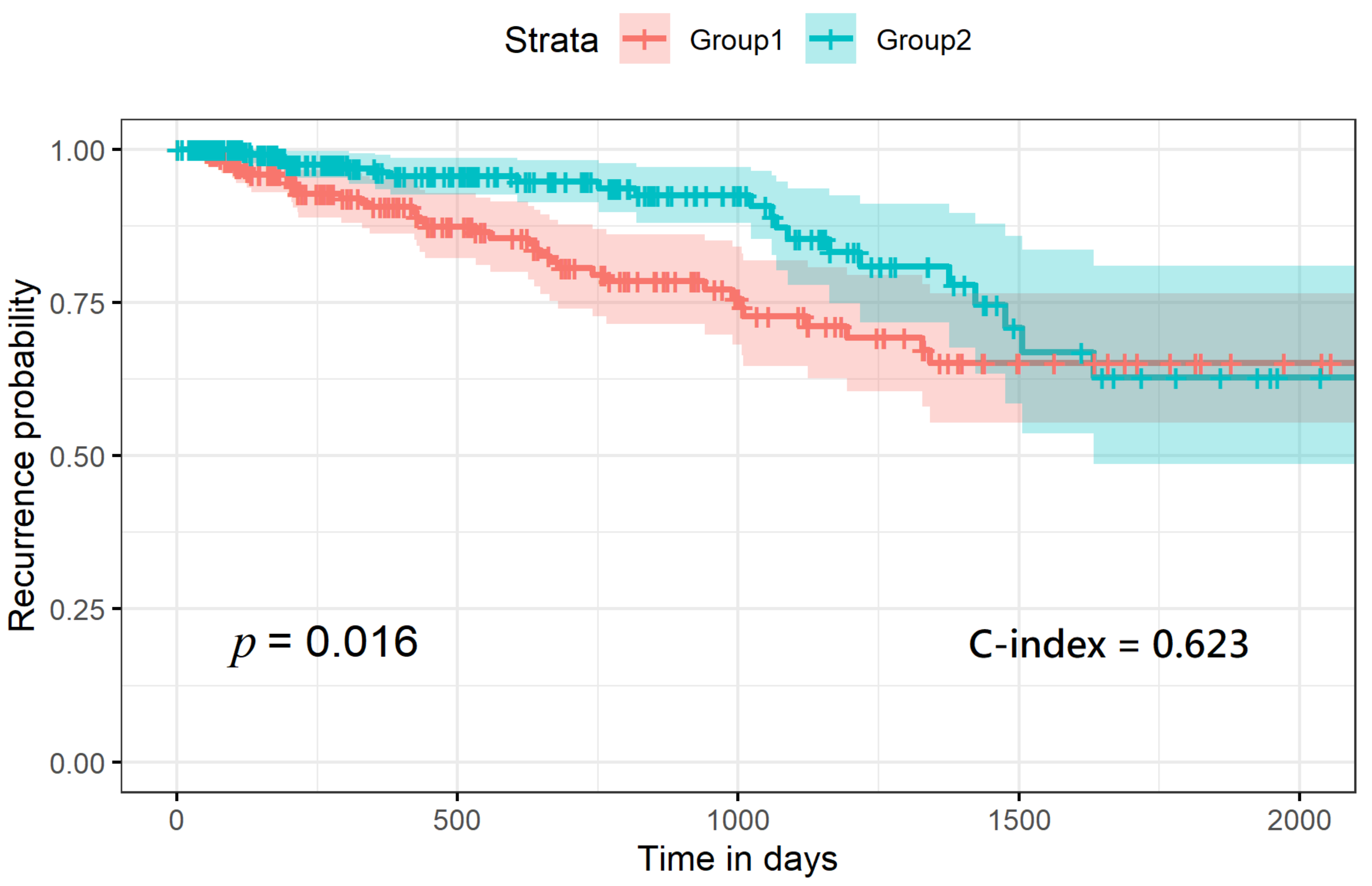
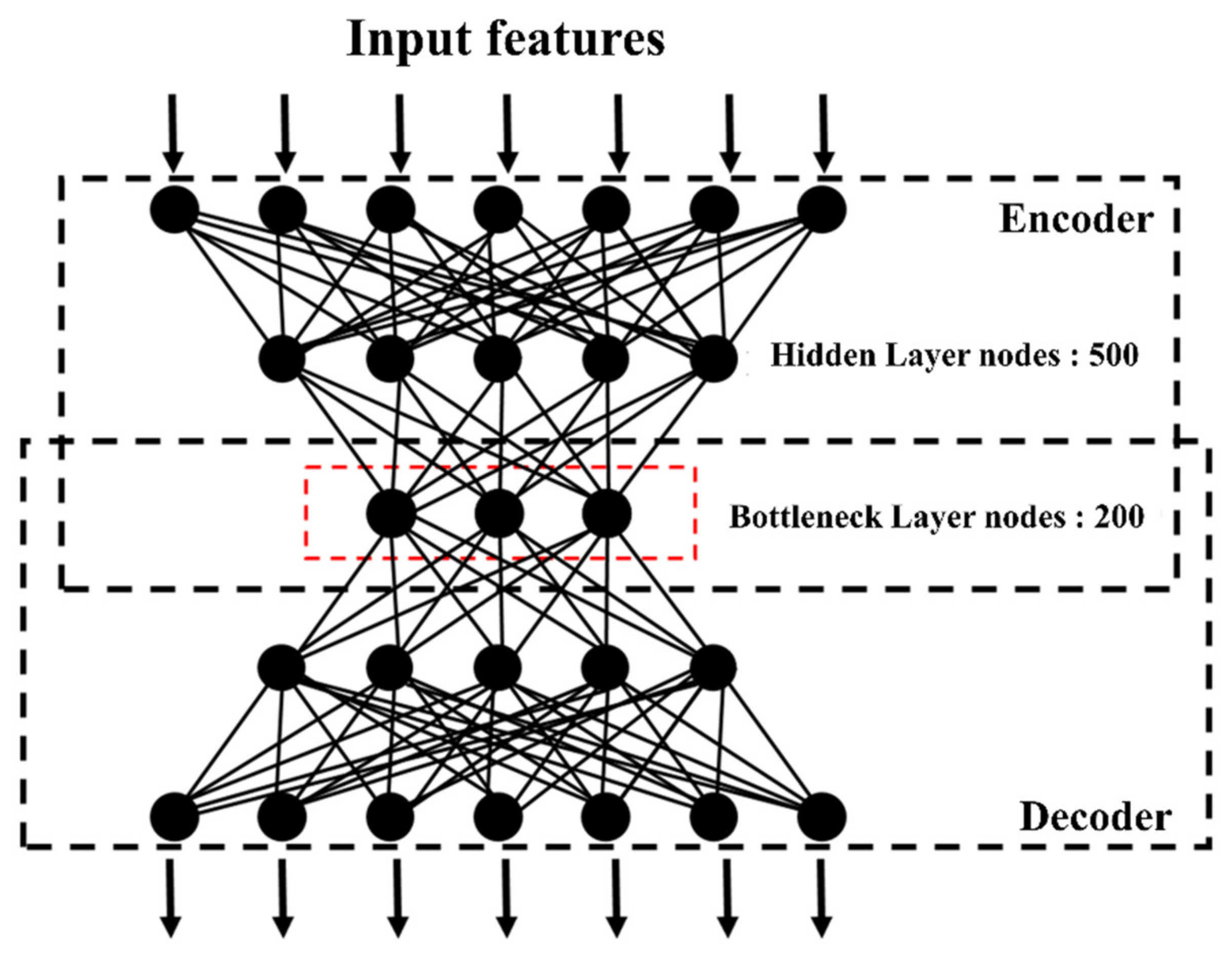
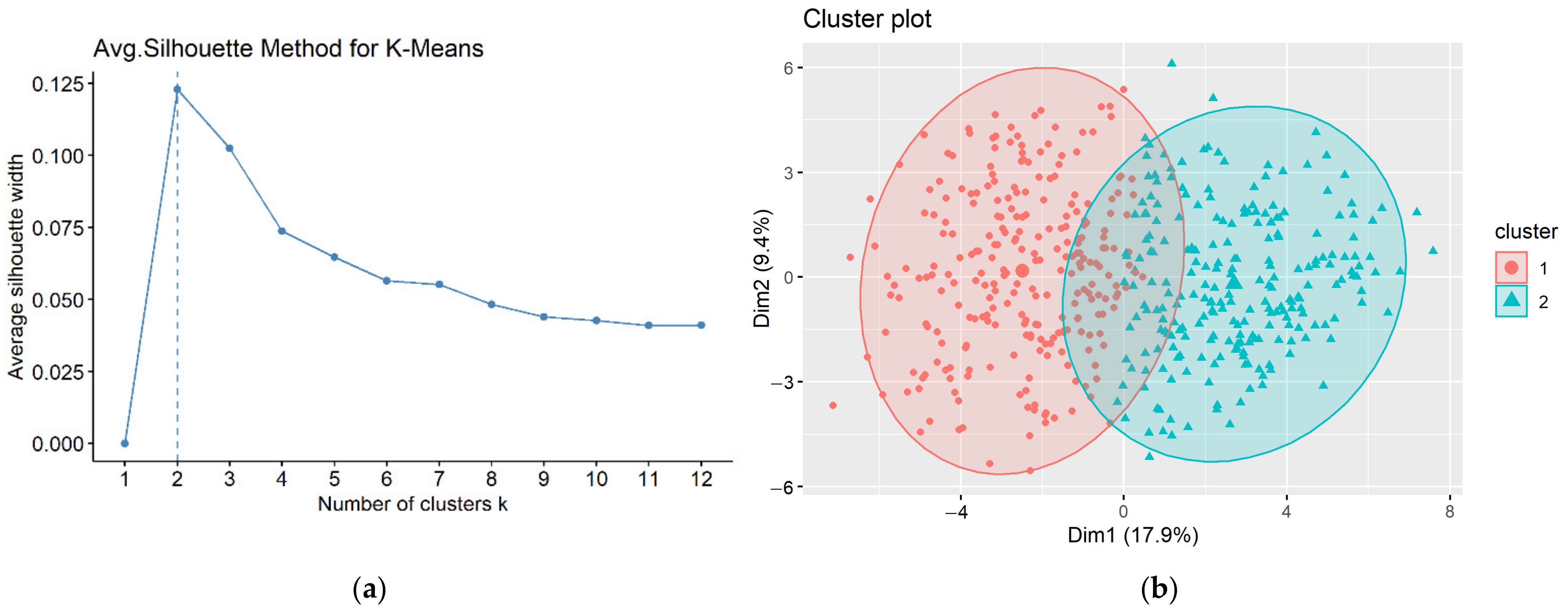
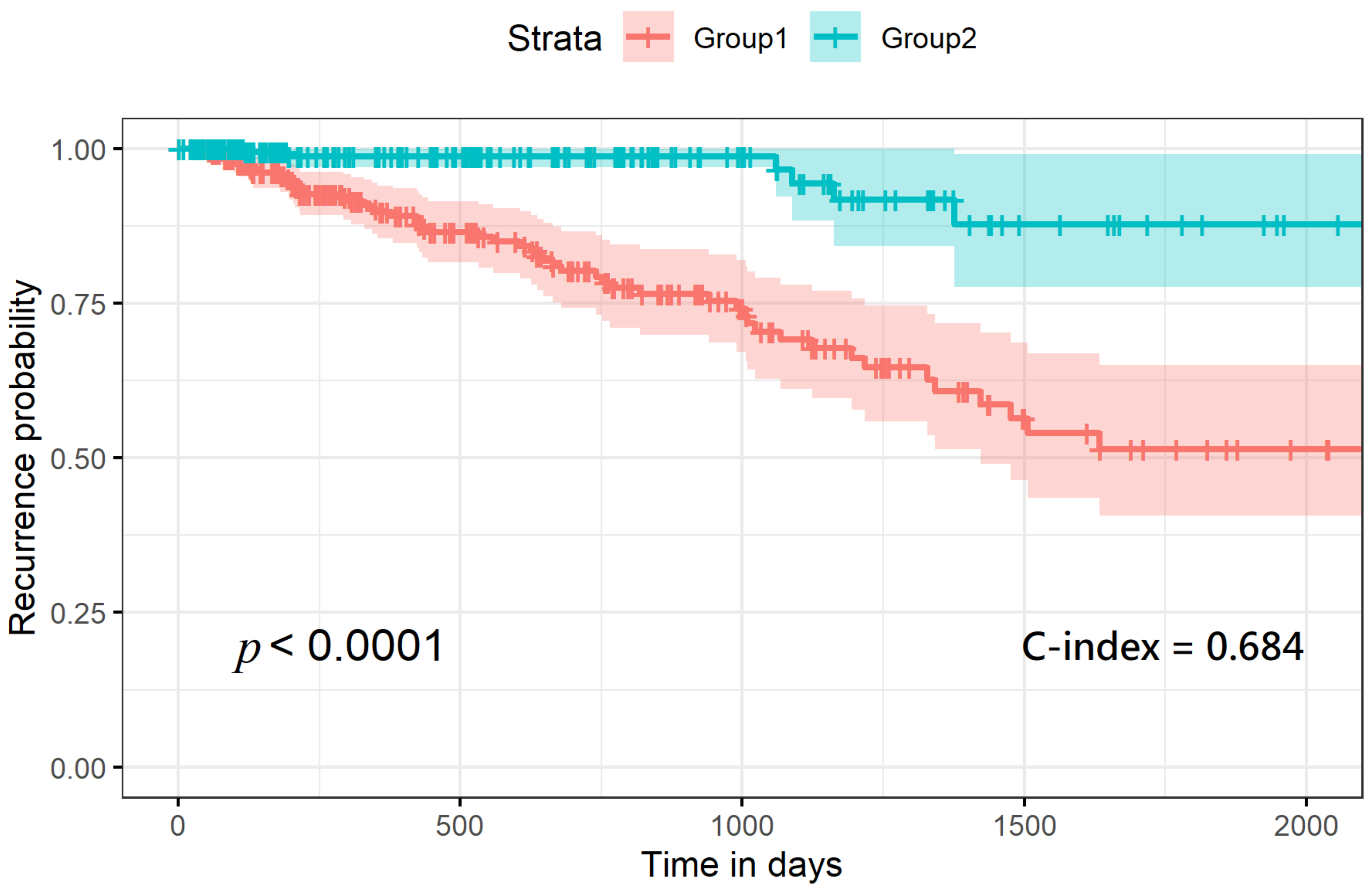
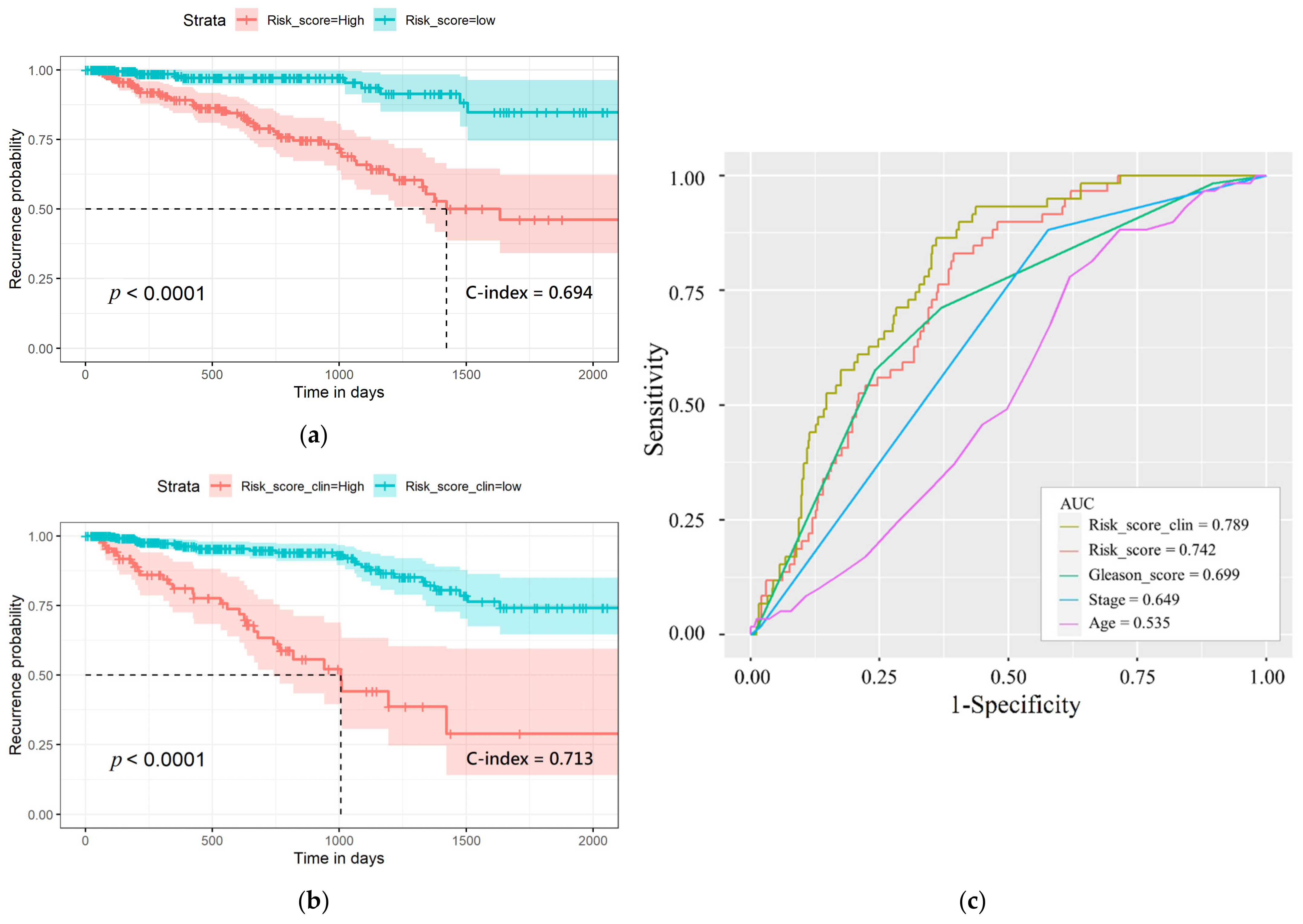
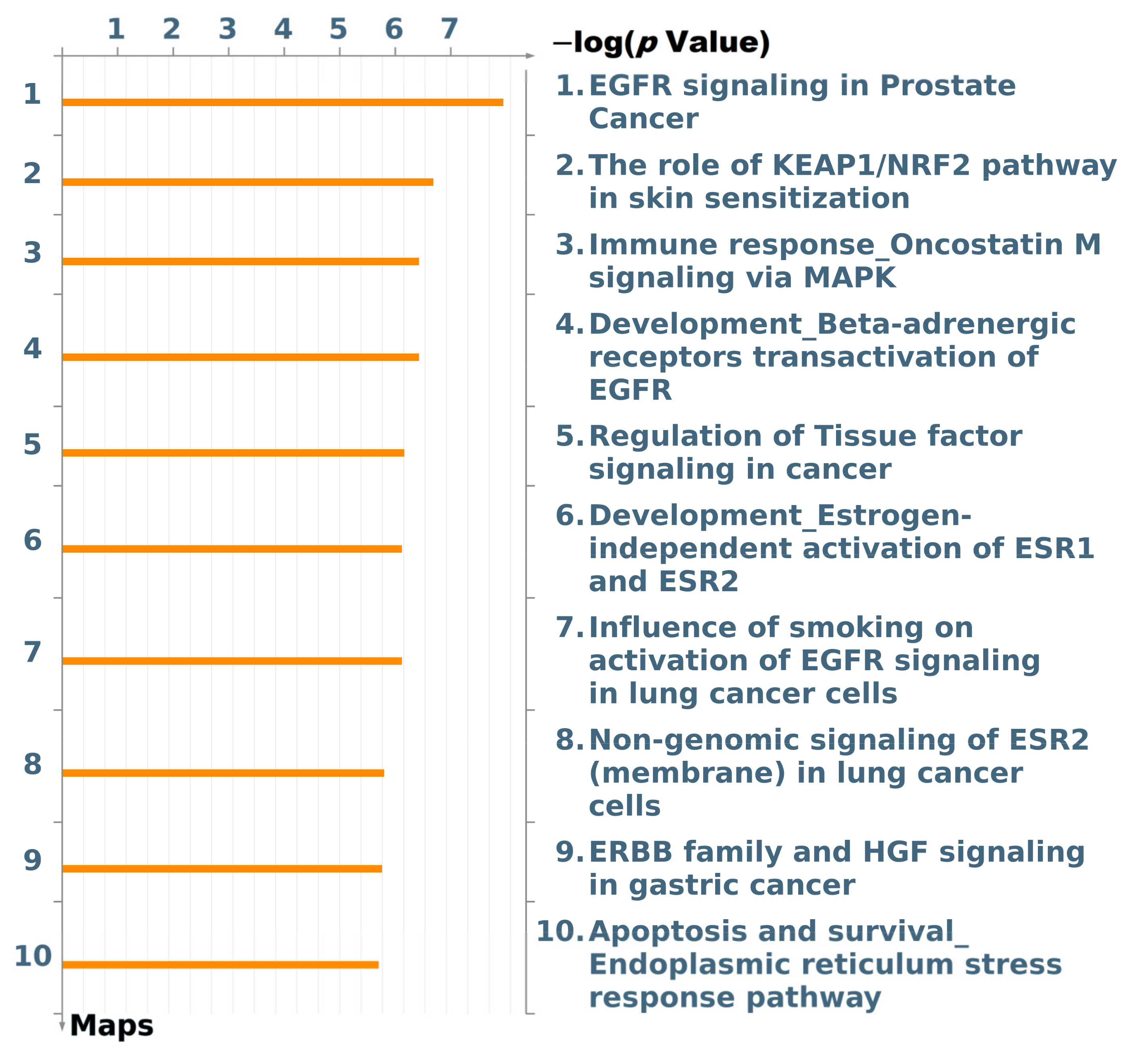
| Title | Cancer Type | Sample Size | Omics Data | Prediction Type | Methods | Reference |
|---|---|---|---|---|---|---|
| Predicting clinical outcomes from large-scale cancer genomic profiles with deep survival models | Pan-glioma (LGG/GBM), BRCA, KIPAN | Clinical and molecular data from TCGA | Gene expressions from TCGA | Survival analysis, established deep survival models to improve prognostic accuracy | Deep learning (DL) and Bayesian optimization methods | Yousefi et al., September 2017 [7] |
| Deep learning-based multi-omics integration robustly predicts survival in liver cancer | HCC | 360 patients from TCGA | RNA sequencing, miRNA sequencing, methylation data (TCGA) | Survival prognostic predictions | DL-based model, validated on five external datasets | Chaudhary et al., March 2018 [8] |
| Deep learning-based multi-omics data integration reveals two prognostic subtypes in high-risk neuroblastoma | Neuroblastoma | 407 patients from TARGET, 498 patients from SEQC | Gene expression, copy number alterations (TARGET and SEQC) | Identified two subtypes with significant survival differences | DL-based model, validated in two independent datasets | Li Zhang et al., October 2018 [9] |
| Integrative network analysis of TCGA data for ovarian cancer | Ovarian cancer | 1214 Patients from TCGA | Gene expression, methylation data, miRNA, copy number alterations (TCGA) | Predicted clinical outcomes and elucidated interplay between different levels | A new graph-based framework | Zhang et al., December 2014 [10] |
| Similarity network fusion for aggregating data types on a genomic scale | GBM, BIC, KRCCC, LSCC, COAD | Patients ranging from 92 to 215 depended on cancer type profiled by TCGA | mRNA expression, DNA methylation, miRNA expression data (TCGA) | Prediction of patients’ survival risk analysis | Similarity network fusion | Wang et al., January 2014 [11] |
| Epoch | Additional Hidden Layer Shape | Bottleneck Layer Shape | Normalization | Experiment | Survival-Related Node Number | 3-Omics C-Index | |
|---|---|---|---|---|---|---|---|
| No. of hyper-parameters used | 5 | 500 | 200 | Standard Normalization | DL | 53 | 0.684 (SE 0.023) |
| No. of bottleneck nodes | 10 | 500 | 100 | Standard Normalization | DL | 24 | 0.656 (SE 0.022) |
| 10 | 500 | 200 | Standard Normalization | DL | 59 | 0.668 (SE 0.023) | |
| 10 | 500 | 300 | Standard Normalization | DL | 124 | 0.668 (SE 0.02) | |
| 10 | 1000 | 100 | Standard Normalization | DL | 26 | 0.673 (SE 0.027) | |
| 10 | 1000 | 300 | Standard Normalization | DL | 118 | 0.683 (SE 0.02) | |
| 10 | 1000 | 500 | Standard Normalization | DL | 207 | 0.678 (SE 0.02) | |
| No. of epochs | 1 | 500 | 200 | Standard Normalization | DL | 70 | 0.677 (SE 0.02) |
| 5 | 500 | 200 | Standard Normalization | DL | 53 | 0.684 (SE 0.023) | |
| 15 | 500 | 200 | Standard Normalization | DL | 83 | 0.676 (SE 0.026) | |
| 30 | 500 | 200 | Standard Normalization | DL | 95 | 0.661 (SE 0.023) | |
| 50 | 500 | 200 | Standard Normalization | DL | 124 | 0.663 (SE 0.027) | |
| 1 | 1000 | 300 | Standard Normalization | DL | 115 | 0.679 (SE 0.02) | |
| 5 | 1000 | 300 | Standard Normalization | DL | 103 | 0.672 (SE 0.02) | |
| 15 | 1000 | 300 | Standard Normalization | DL | 120 | 0.666 (SE 0.023) | |
| 30 | 1000 | 300 | Standard Normalization | DL | 162 | 0.659 (SE 0.023) | |
| 50 | 1000 | 300 | Standard Normalization | DL | 188 | 0.67 (SE 0.023) | |
| Hidden layers | 5 | 1000, 500 | 100 | Standard Normalization | DL | 24 | 0.68 (SE 0.025) |
| 5 | 1000, 500 | 200 | Standard Normalization | DL | 86 | 0.668 (SE 0.023) | |
| 5 | 1000, 600 | 200 | Standard Normalization | DL | 87 | 0.661 (SE 0.023) |
| Inputs for the SVM Classifier | Prediction Accuracy (%) | Sensitivity (%) | Specificity (%) |
|---|---|---|---|
| Autoencoder model-generated nodes (#53) | 97.1% | 97.0% | 97.2% |
| Multiomics features (#250) 1 | 90.8% | 93.8% | 87.4% |
| Multiomics features + 3 clinical features 2 | 93.7% | 95.6% | 91.5% |
| Multiomics features + stage | 94.3% | 96.5% | 91.7% |
| Multiomics features + age | 90.7% | 93.6% | 87.4% |
| Multiomics features + Gleason Score | 90.6% | 93.2% | 87.6% |
Publisher’s Note: MDPI stays neutral with regard to jurisdictional claims in published maps and institutional affiliations. |
© 2021 by the authors. Licensee MDPI, Basel, Switzerland. This article is an open access article distributed under the terms and conditions of the Creative Commons Attribution (CC BY) license (https://creativecommons.org/licenses/by/4.0/).
Share and Cite
Wang, T.-H.; Lee, C.-Y.; Lee, T.-Y.; Huang, H.-D.; Hsu, J.B.-K.; Chang, T.-H. Biomarker Identification through Multiomics Data Analysis of Prostate Cancer Prognostication Using a Deep Learning Model and Similarity Network Fusion. Cancers 2021, 13, 2528. https://doi.org/10.3390/cancers13112528
Wang T-H, Lee C-Y, Lee T-Y, Huang H-D, Hsu JB-K, Chang T-H. Biomarker Identification through Multiomics Data Analysis of Prostate Cancer Prognostication Using a Deep Learning Model and Similarity Network Fusion. Cancers. 2021; 13(11):2528. https://doi.org/10.3390/cancers13112528
Chicago/Turabian StyleWang, Tzu-Hao, Cheng-Yang Lee, Tzong-Yi Lee, Hsien-Da Huang, Justin Bo-Kai Hsu, and Tzu-Hao Chang. 2021. "Biomarker Identification through Multiomics Data Analysis of Prostate Cancer Prognostication Using a Deep Learning Model and Similarity Network Fusion" Cancers 13, no. 11: 2528. https://doi.org/10.3390/cancers13112528
APA StyleWang, T.-H., Lee, C.-Y., Lee, T.-Y., Huang, H.-D., Hsu, J. B.-K., & Chang, T.-H. (2021). Biomarker Identification through Multiomics Data Analysis of Prostate Cancer Prognostication Using a Deep Learning Model and Similarity Network Fusion. Cancers, 13(11), 2528. https://doi.org/10.3390/cancers13112528






